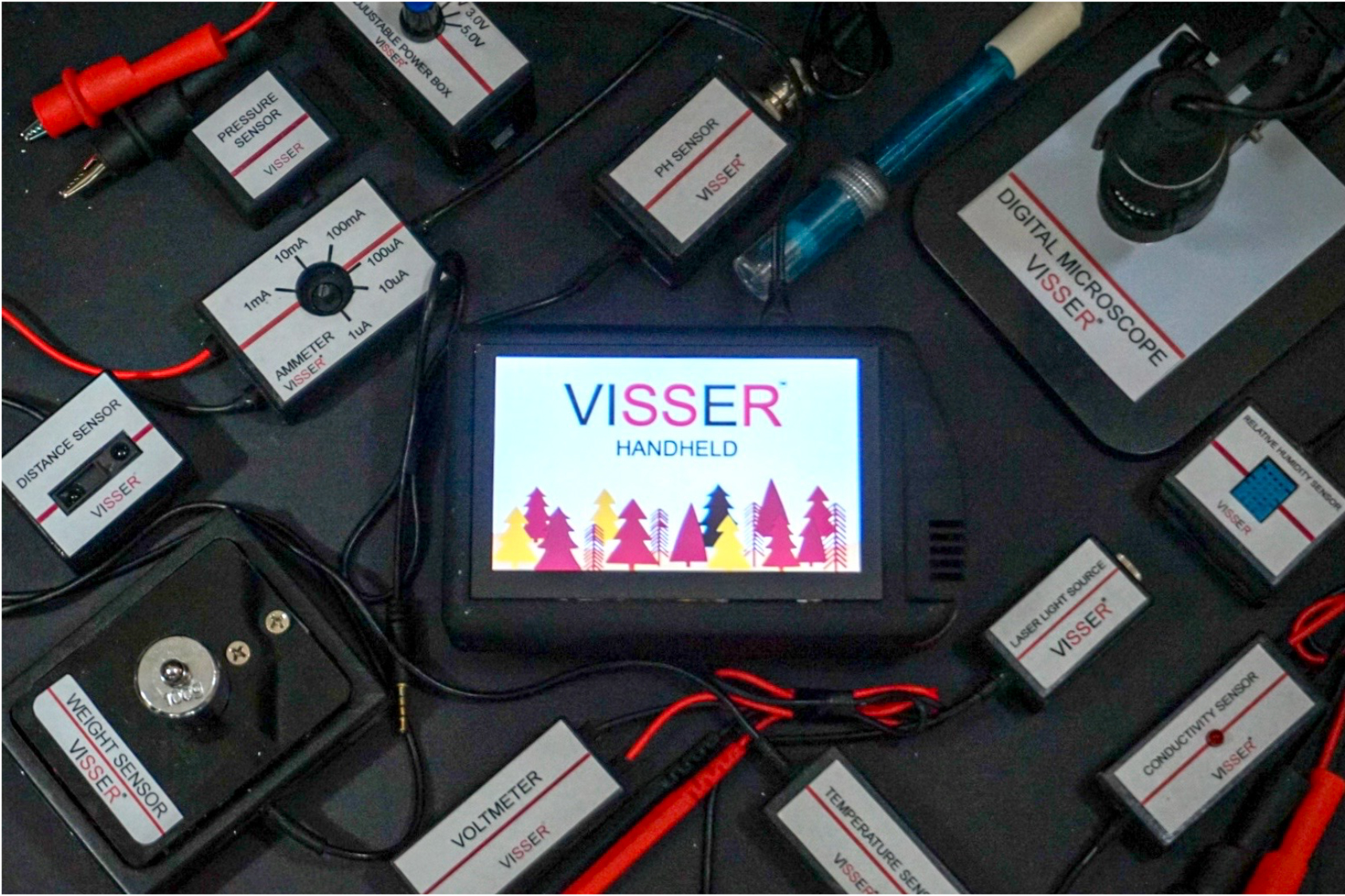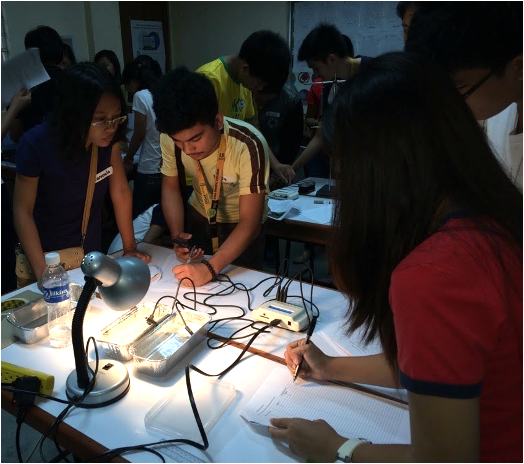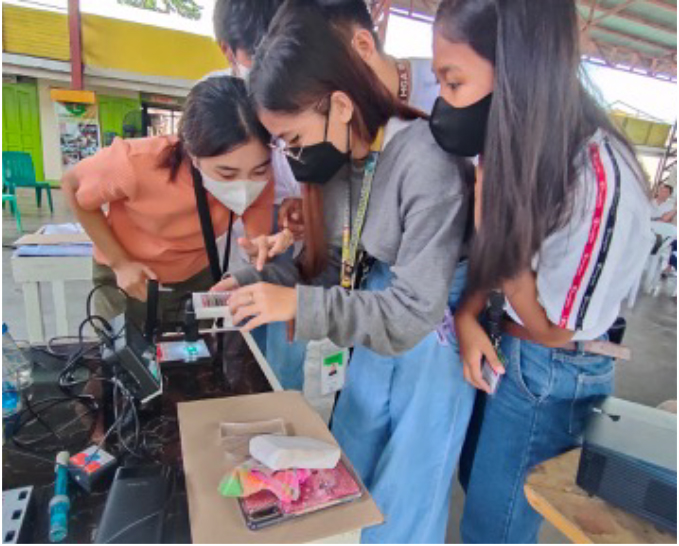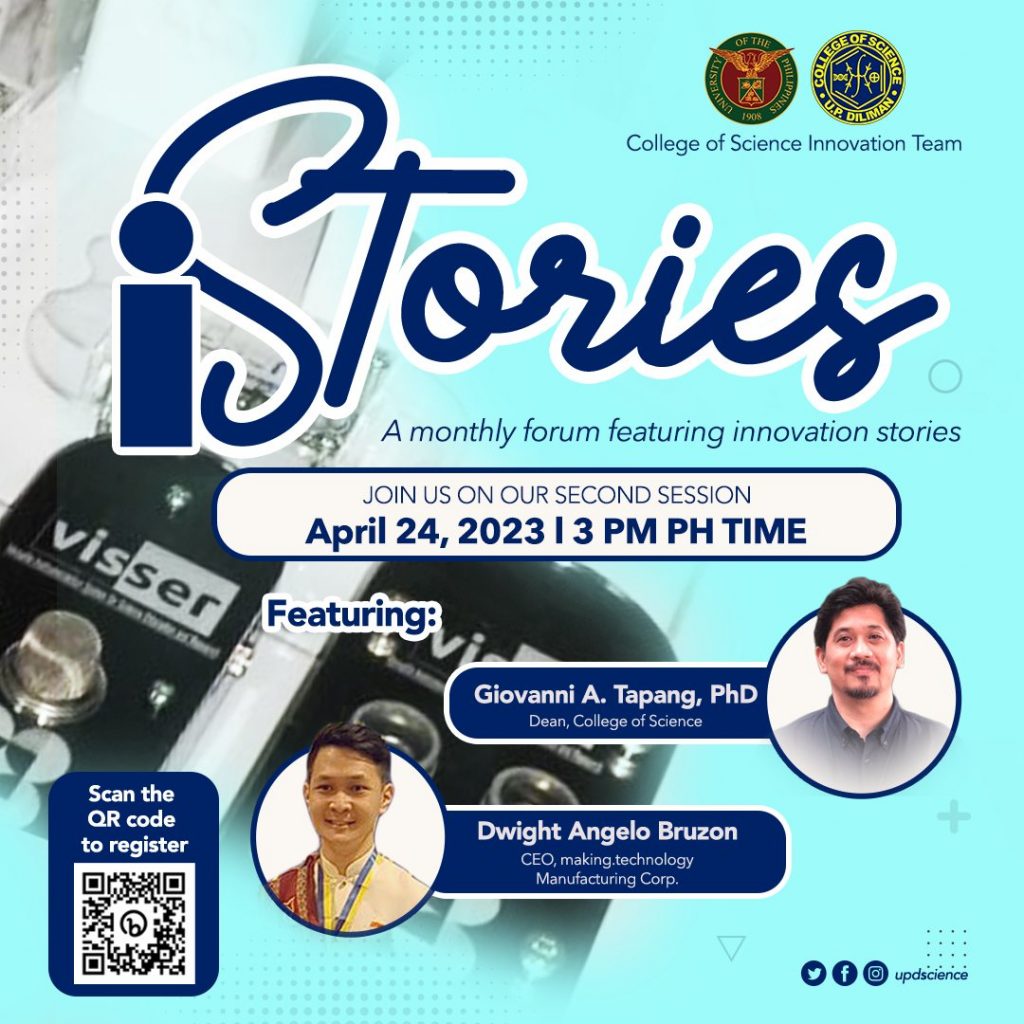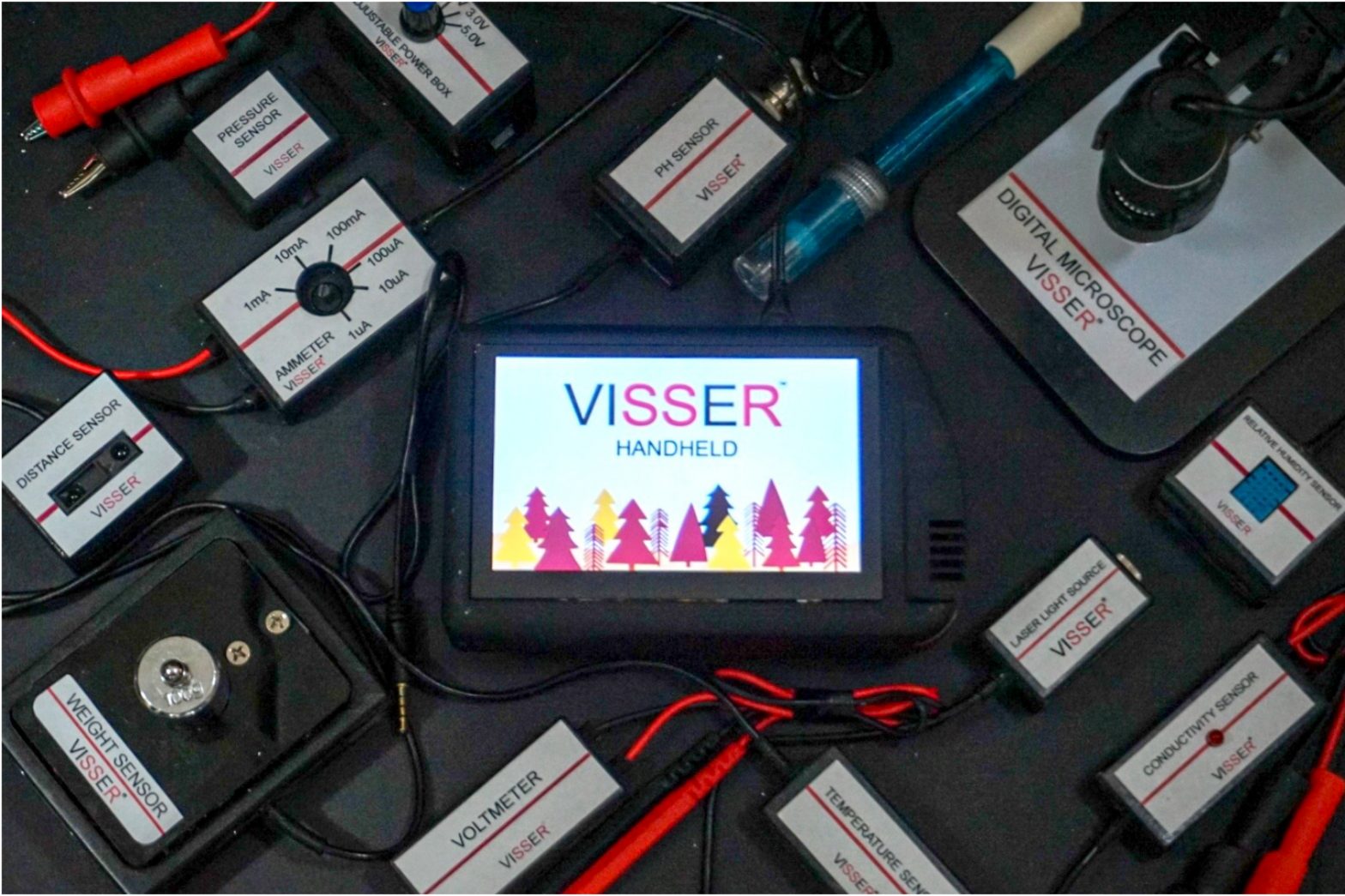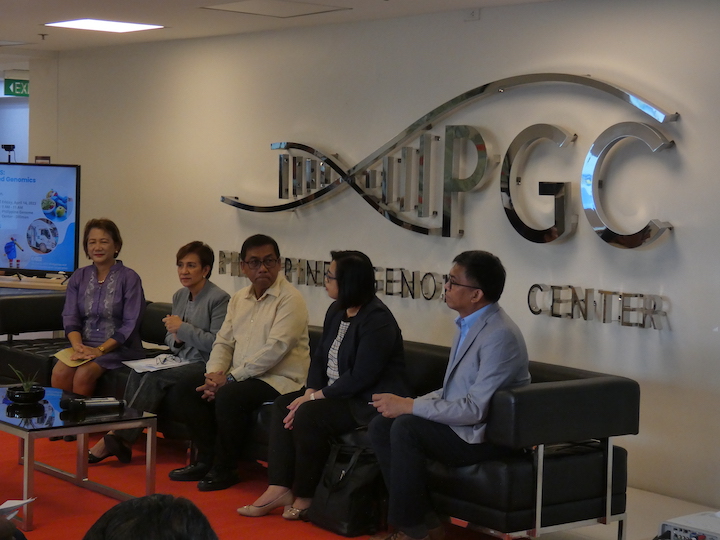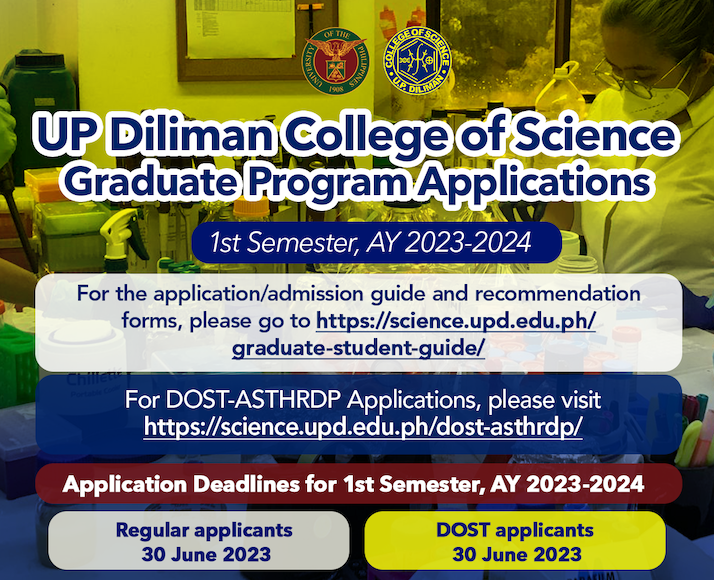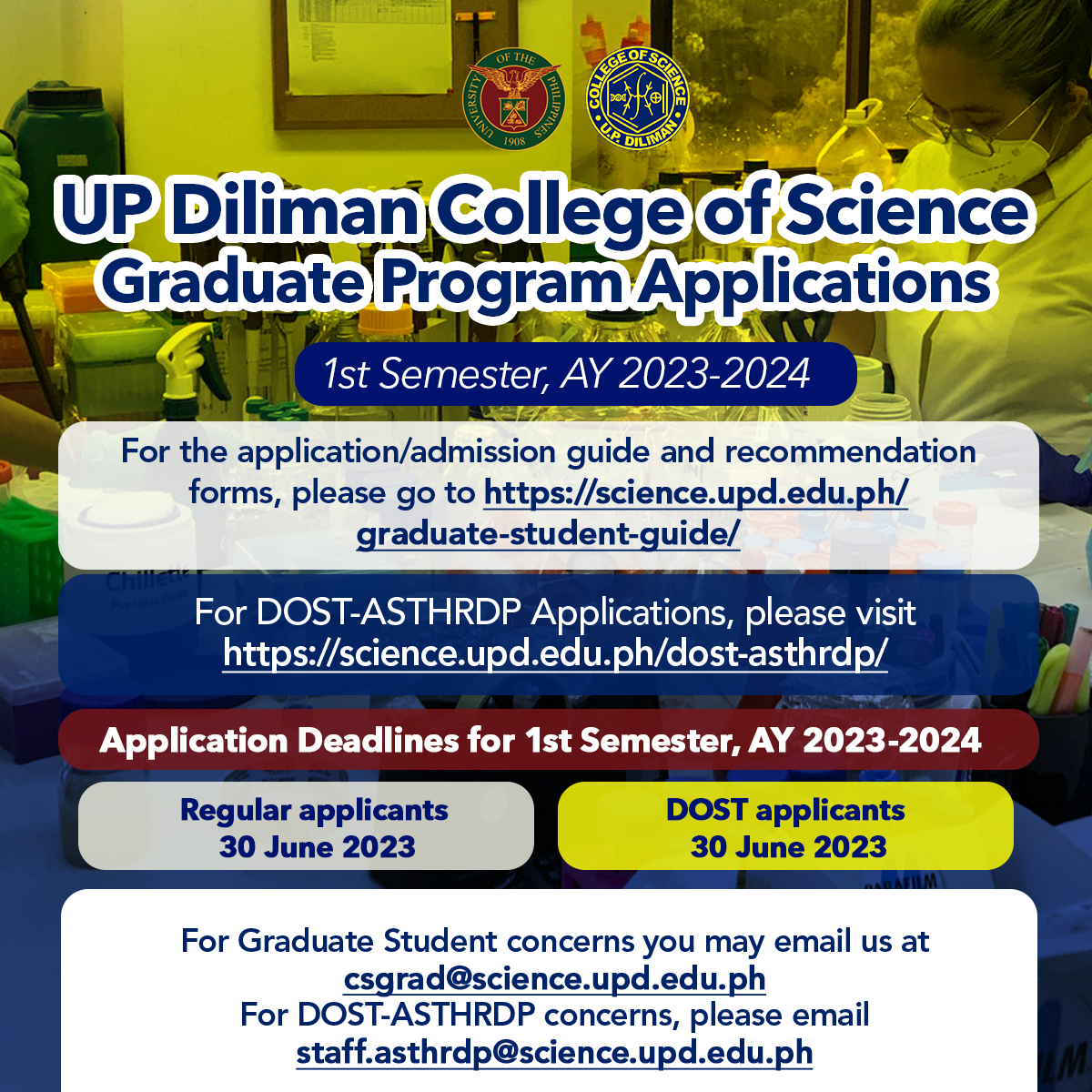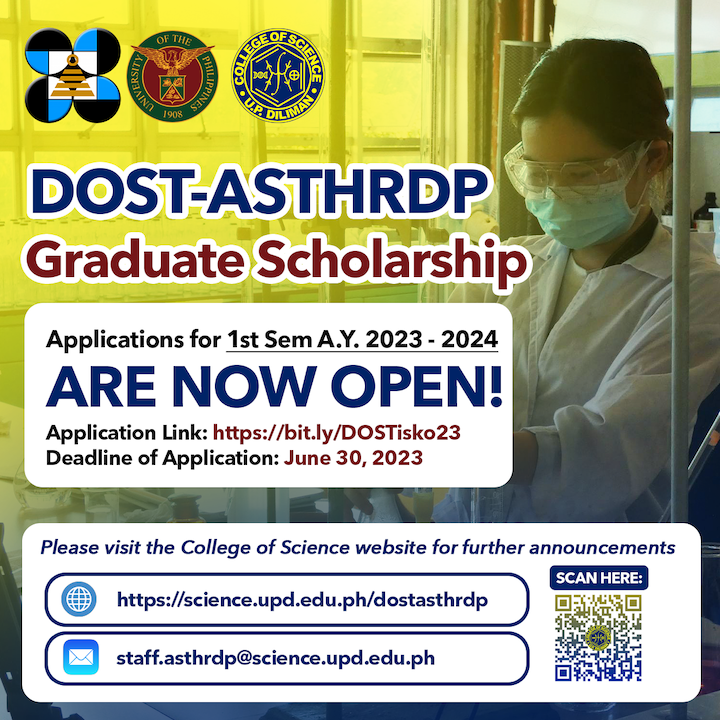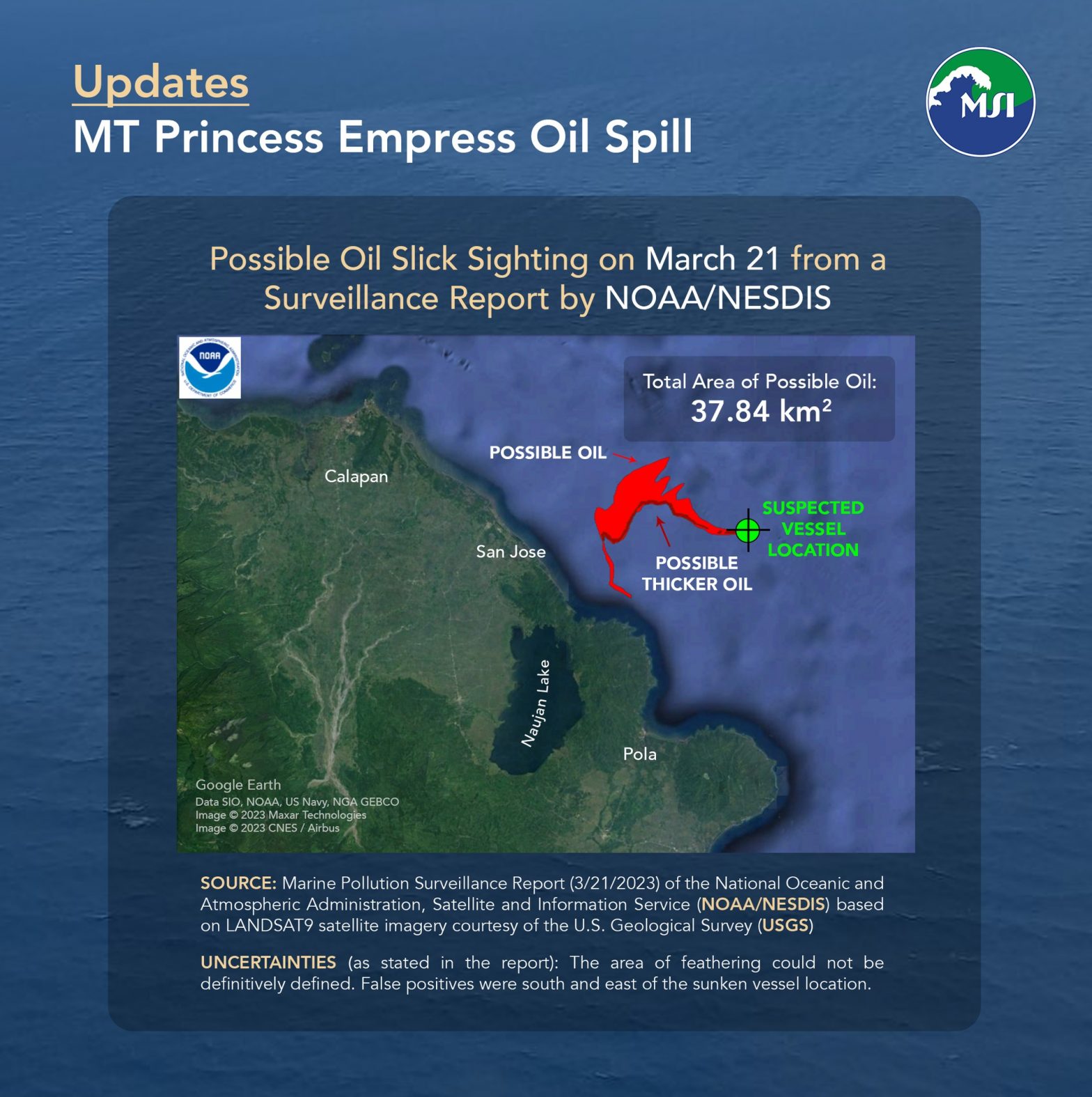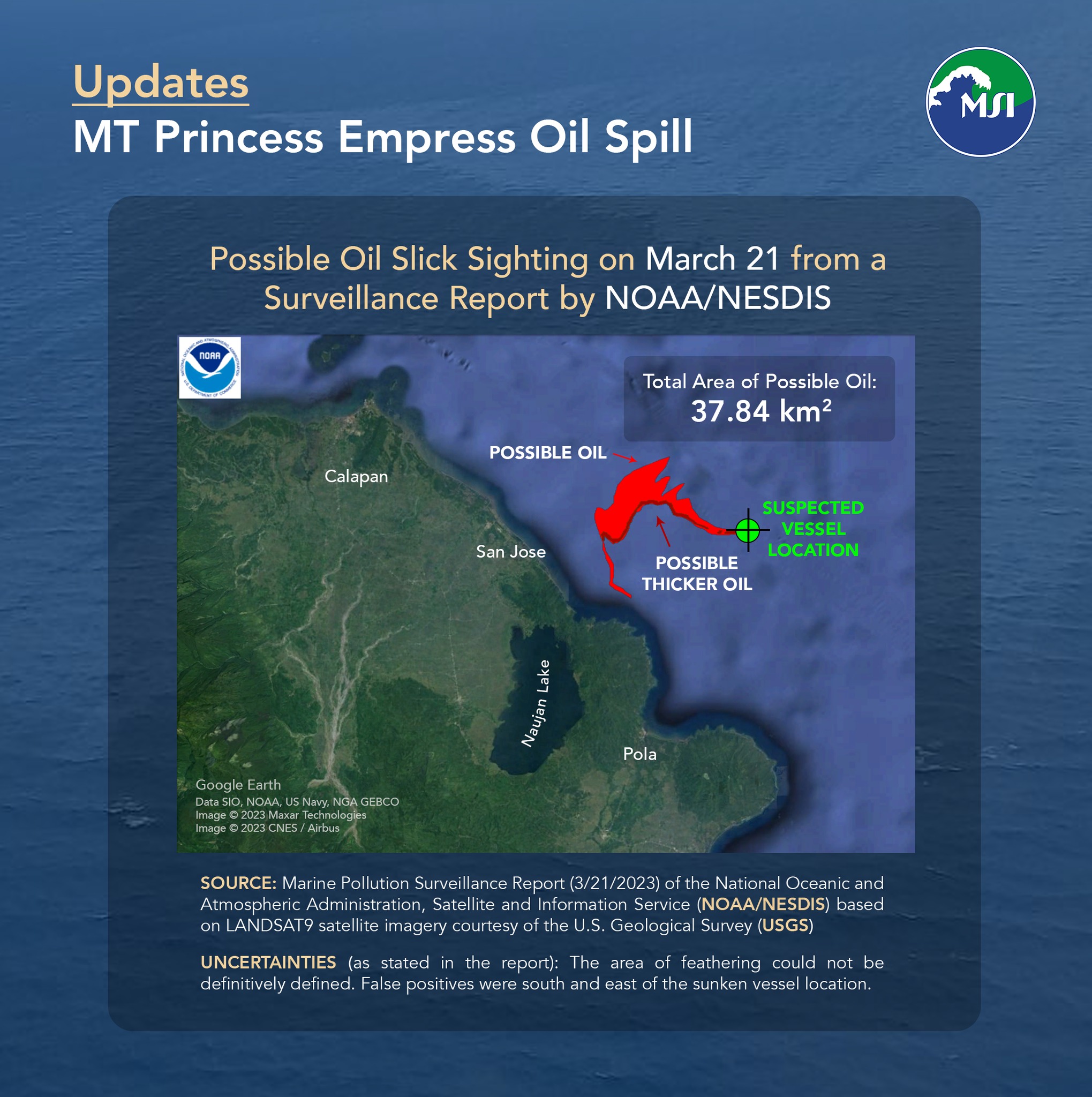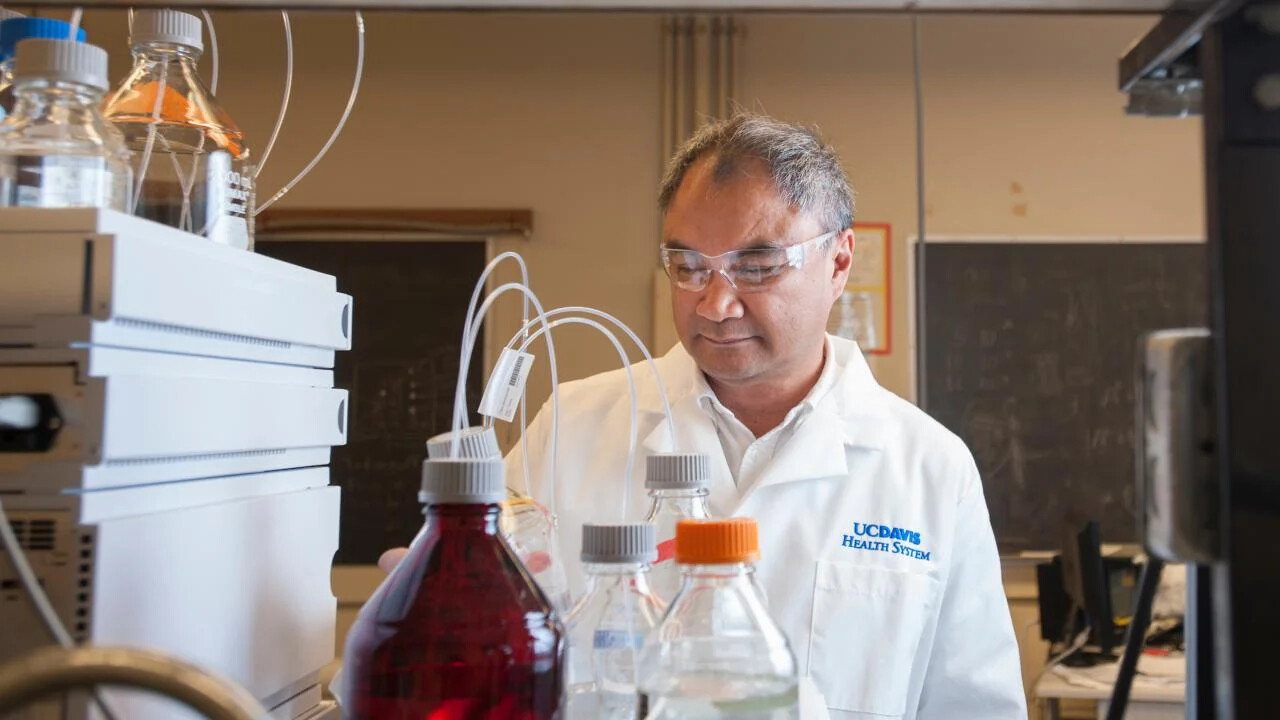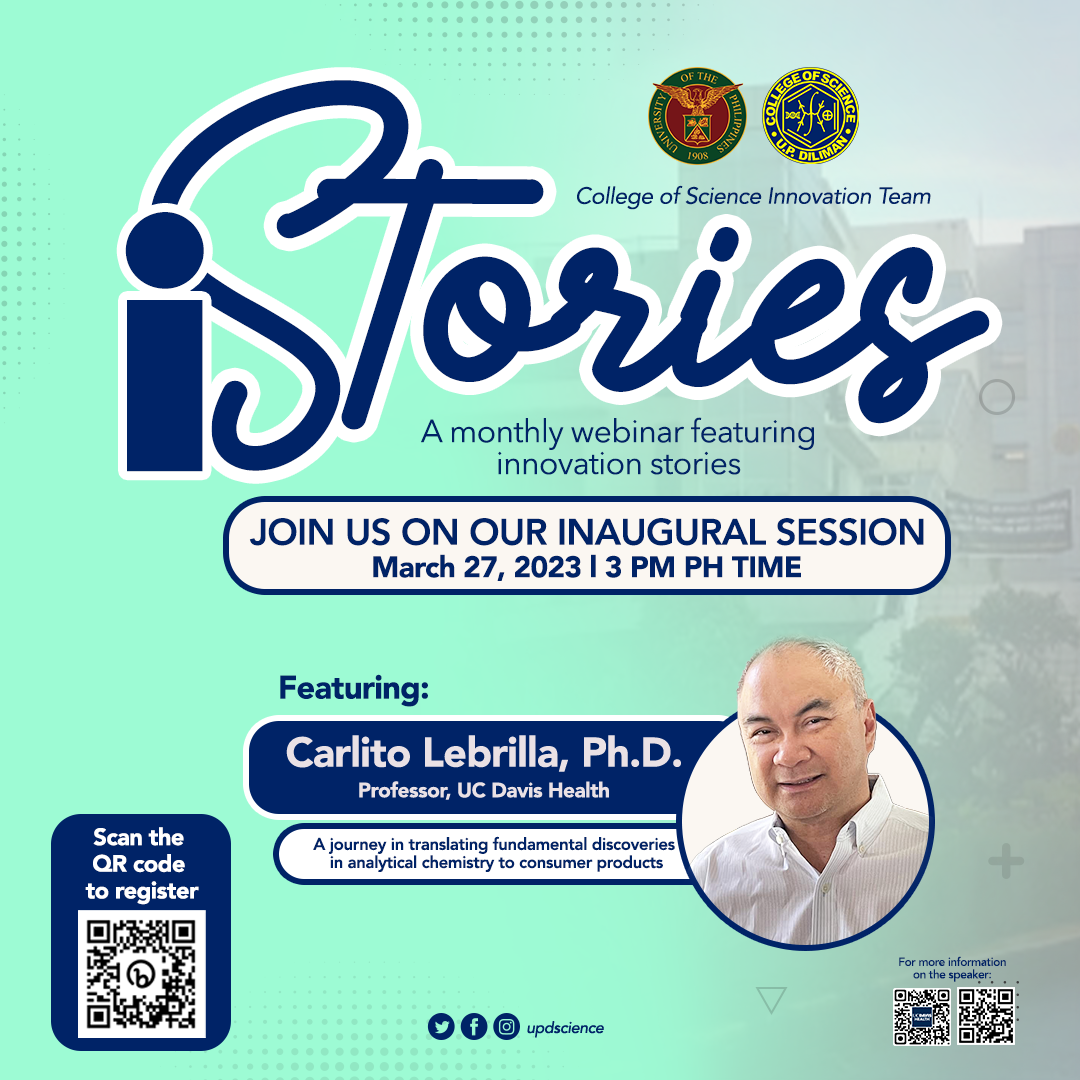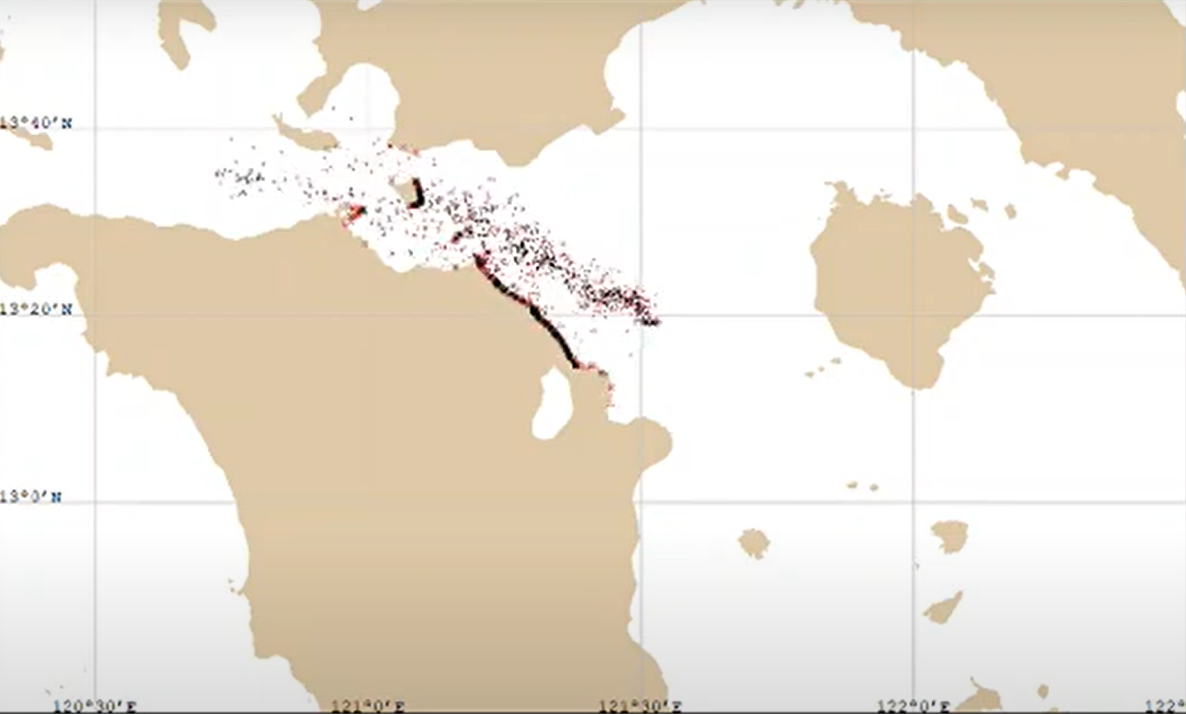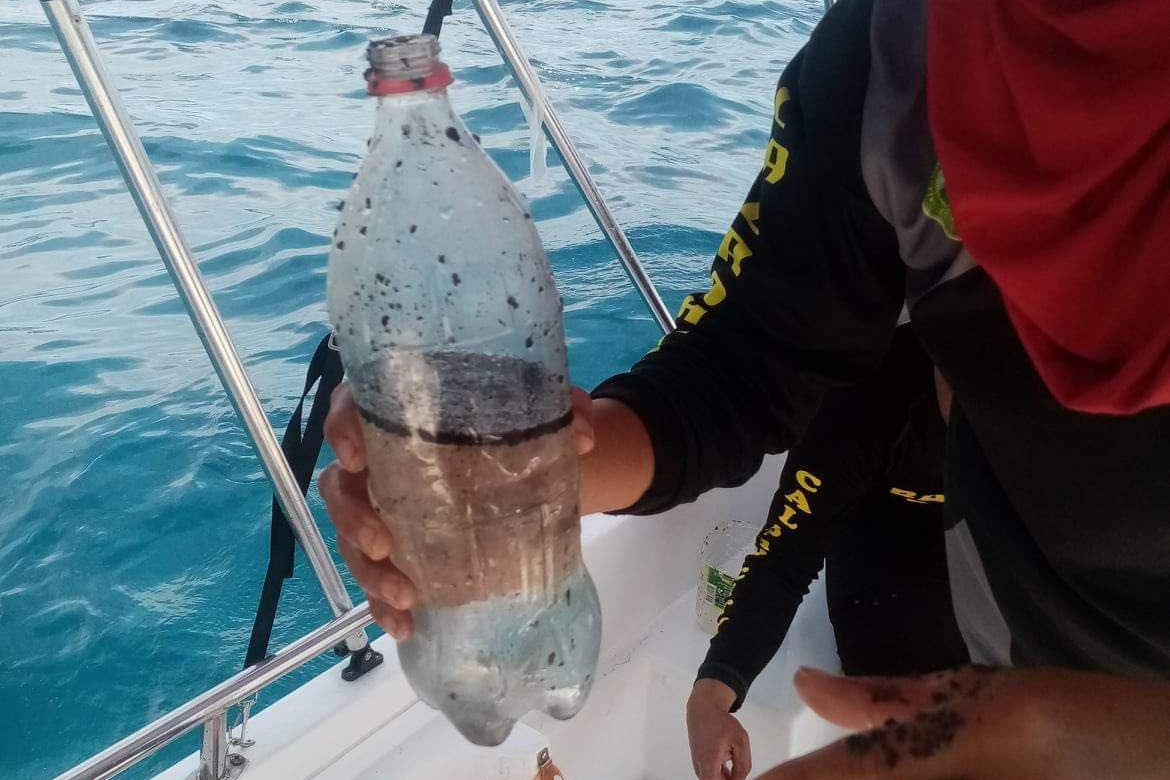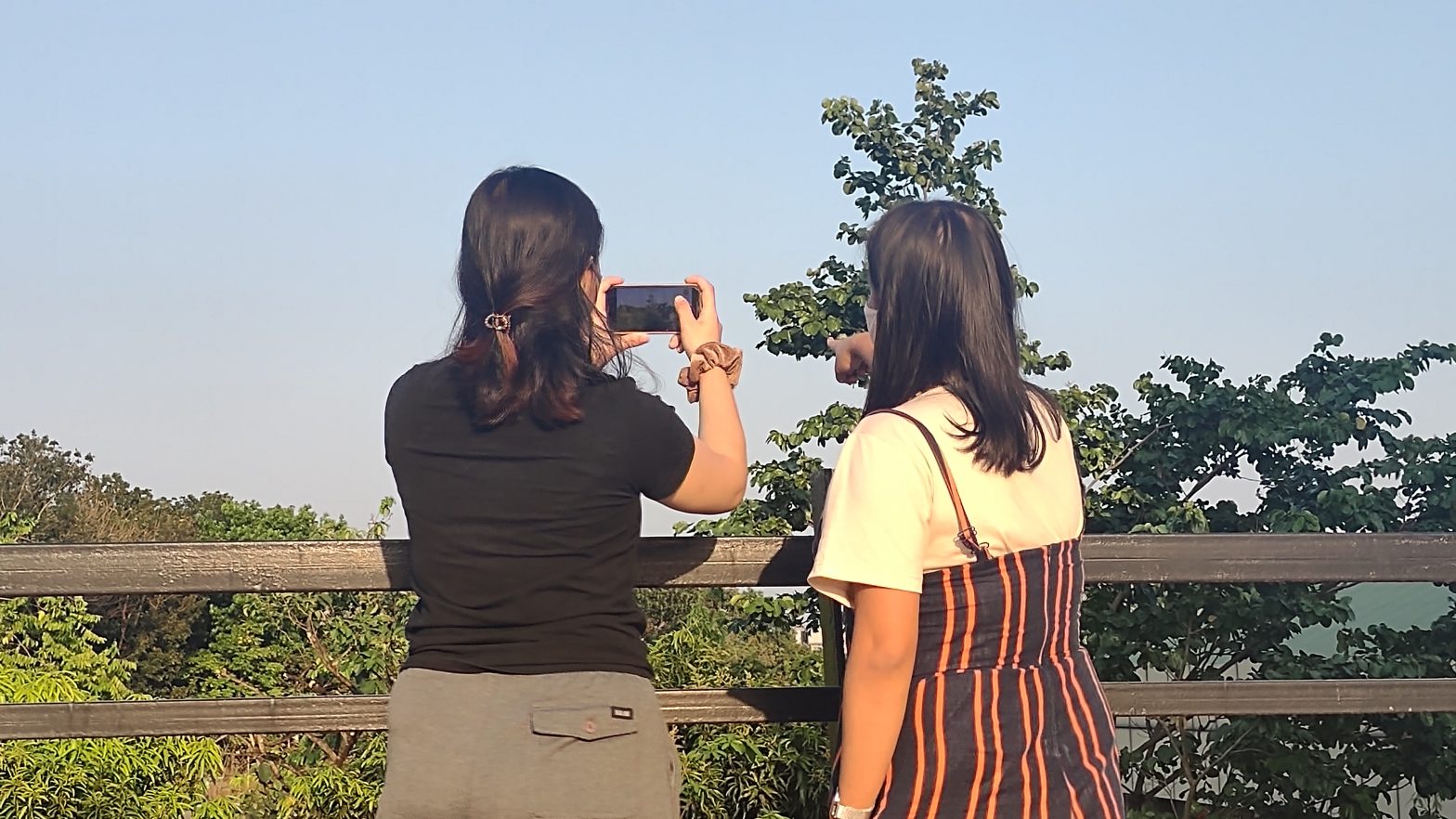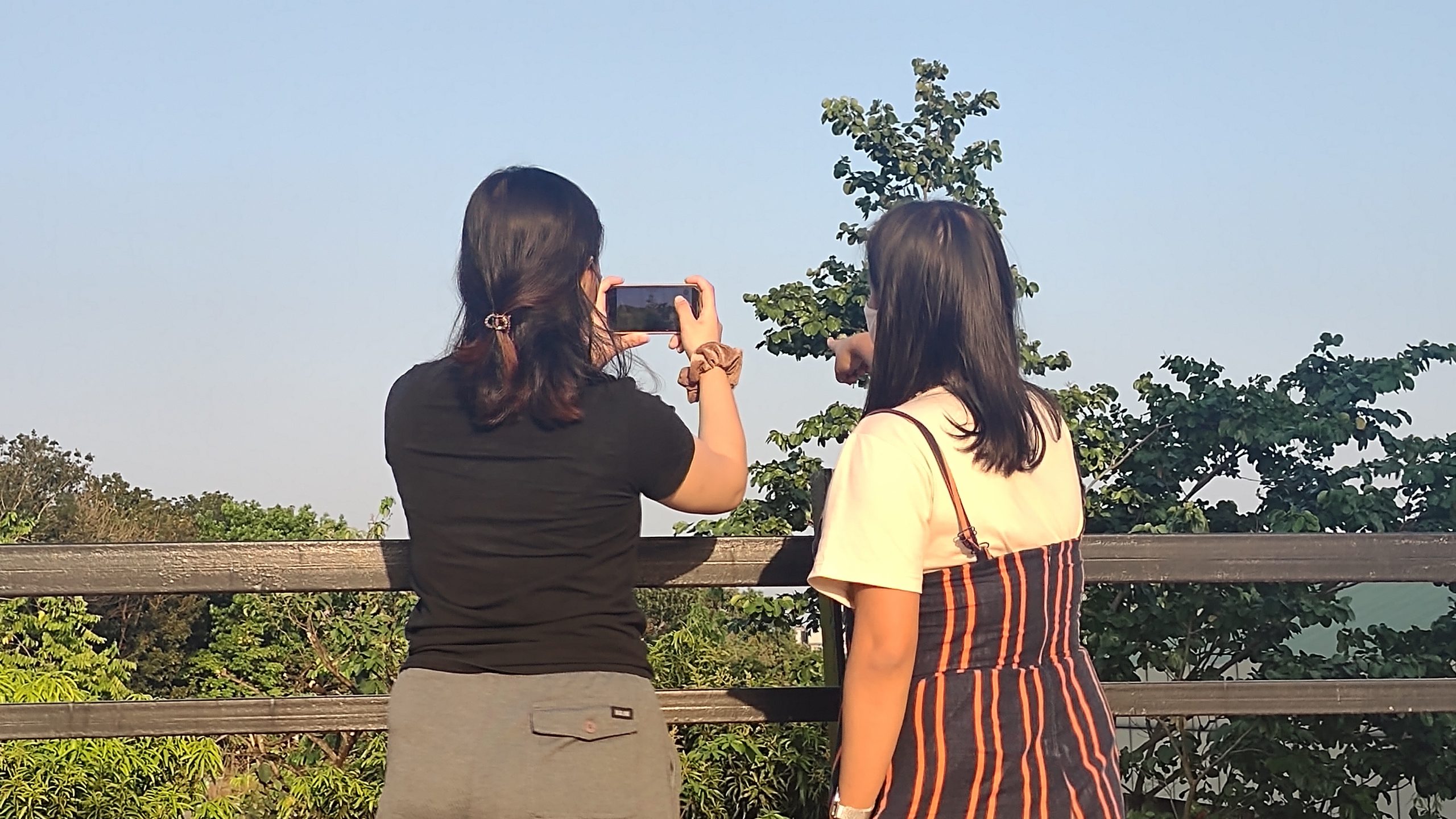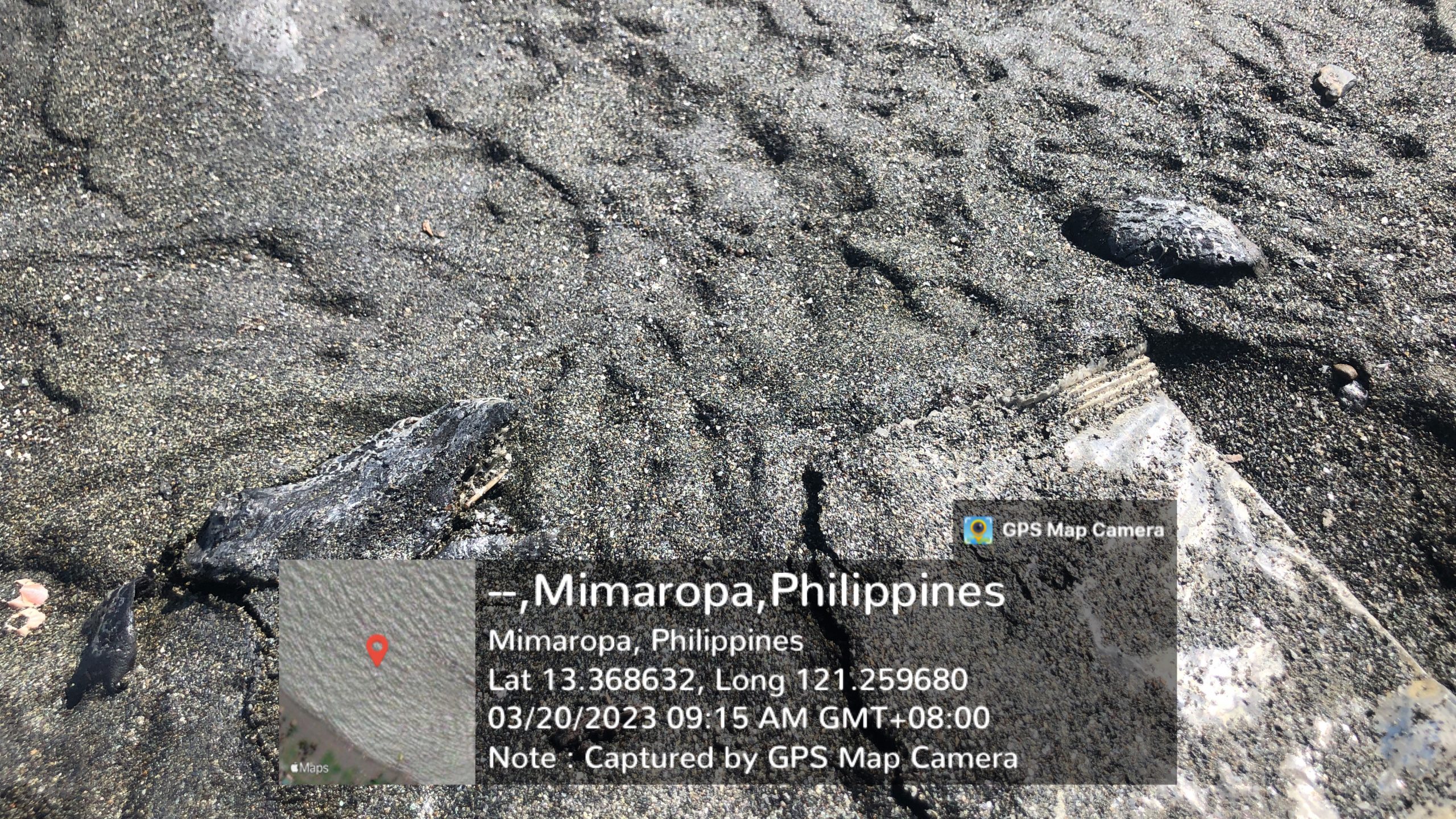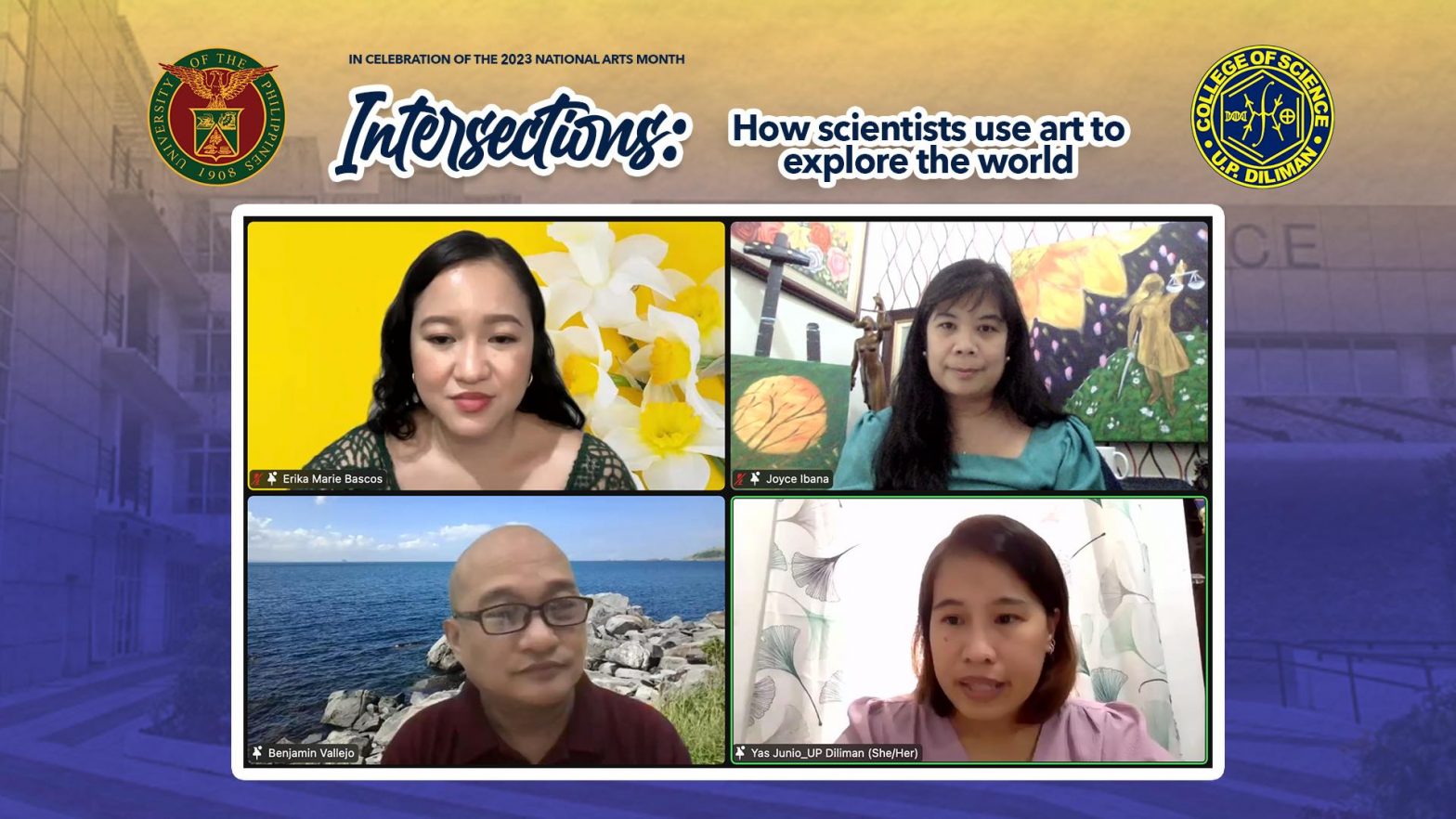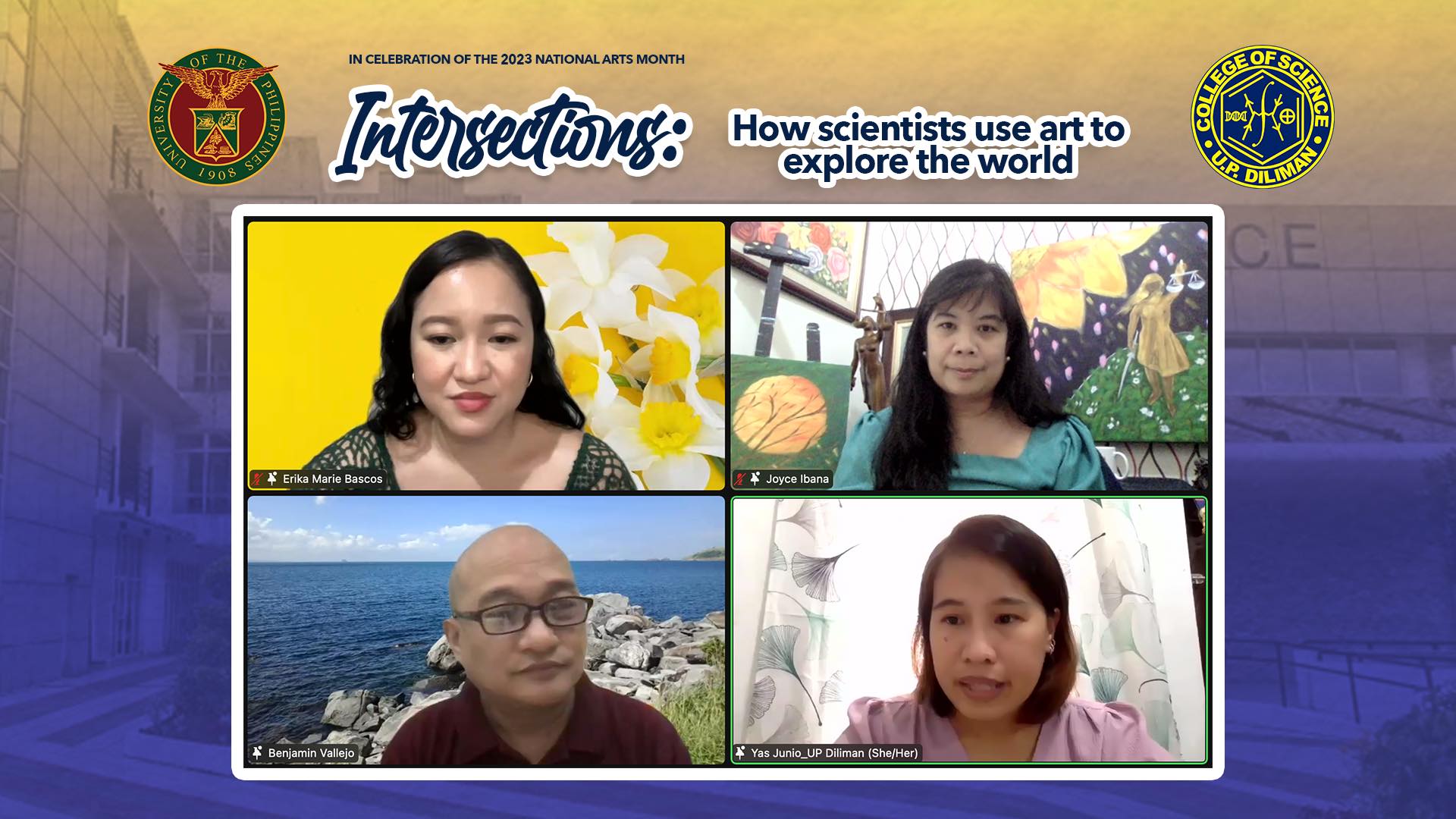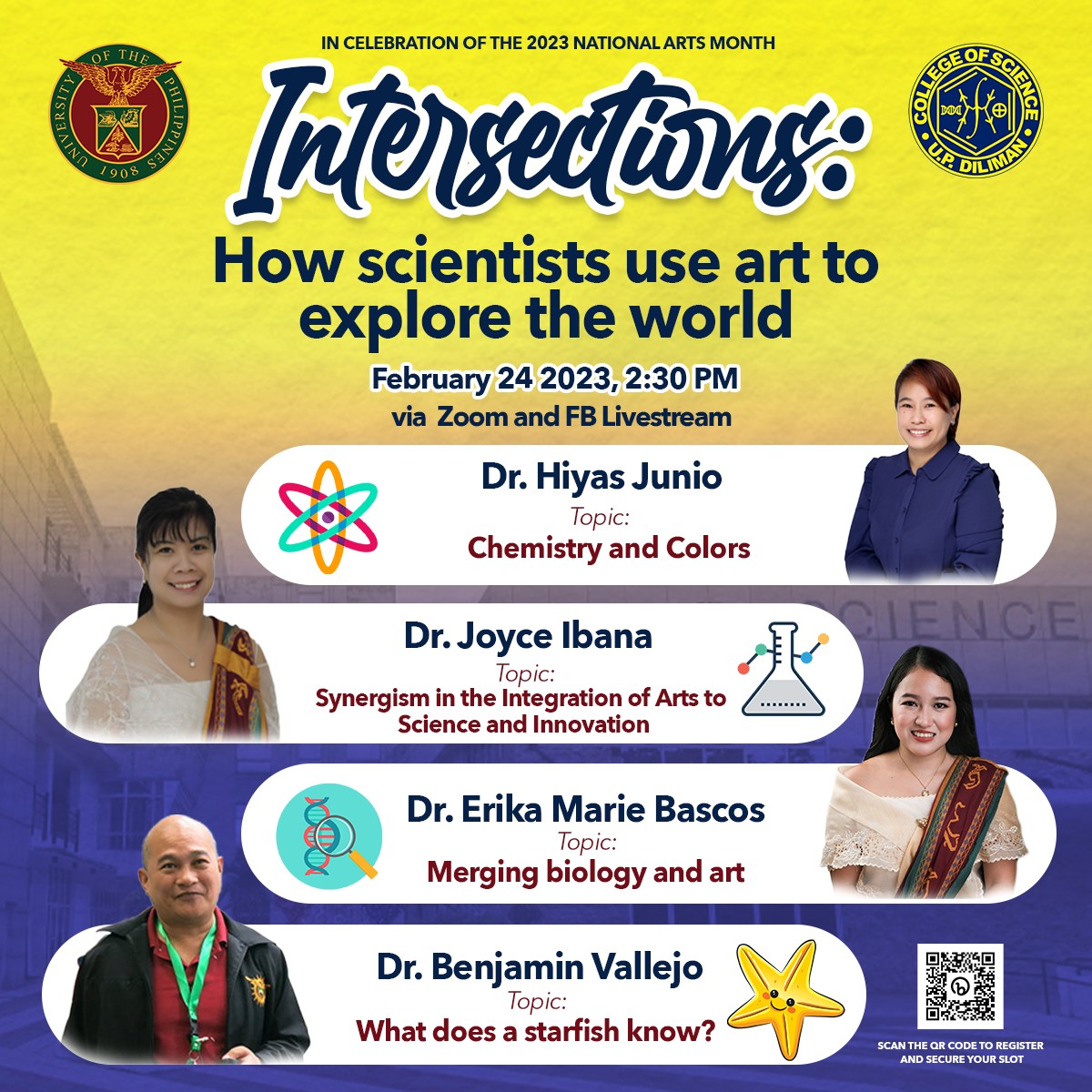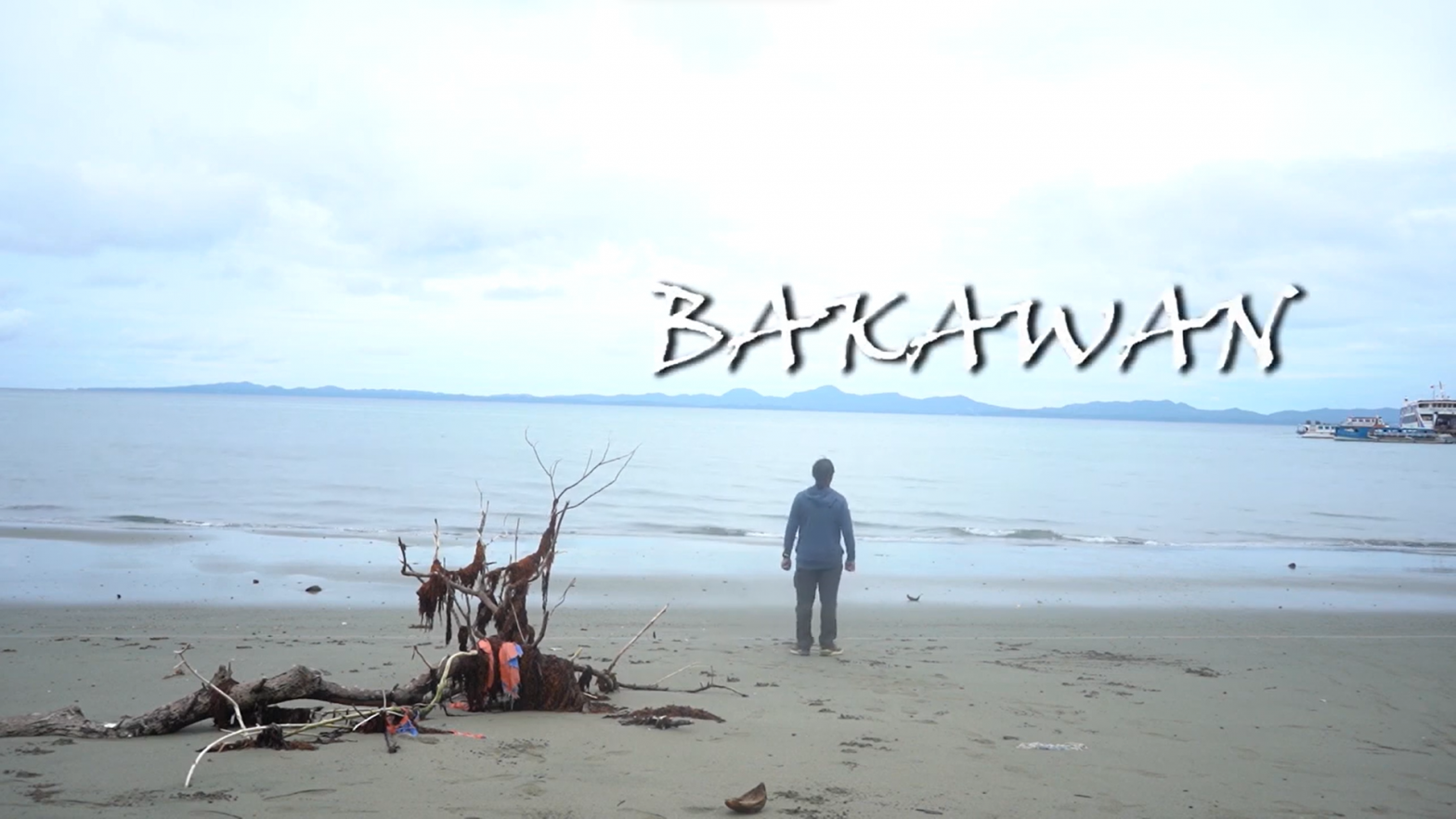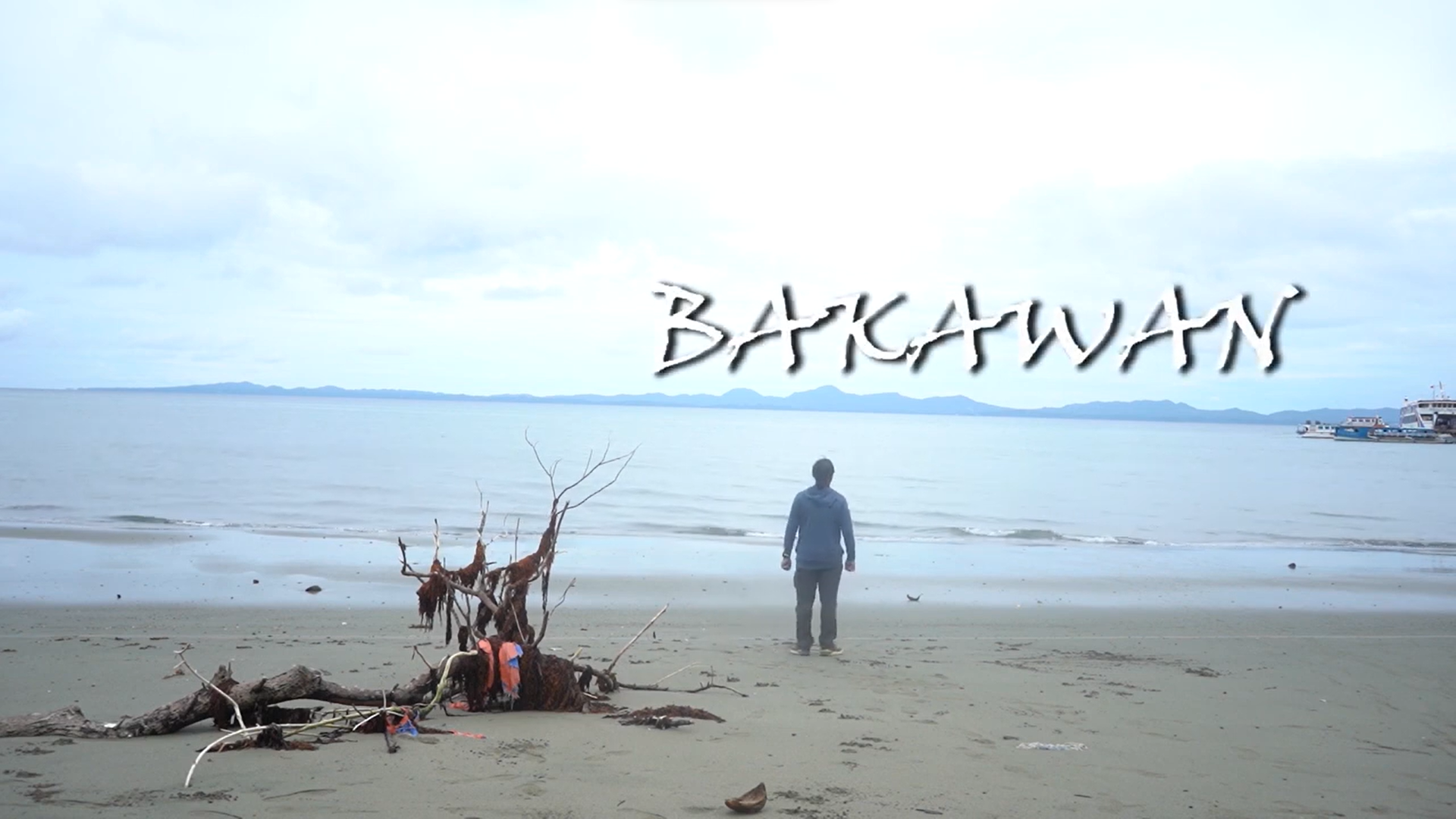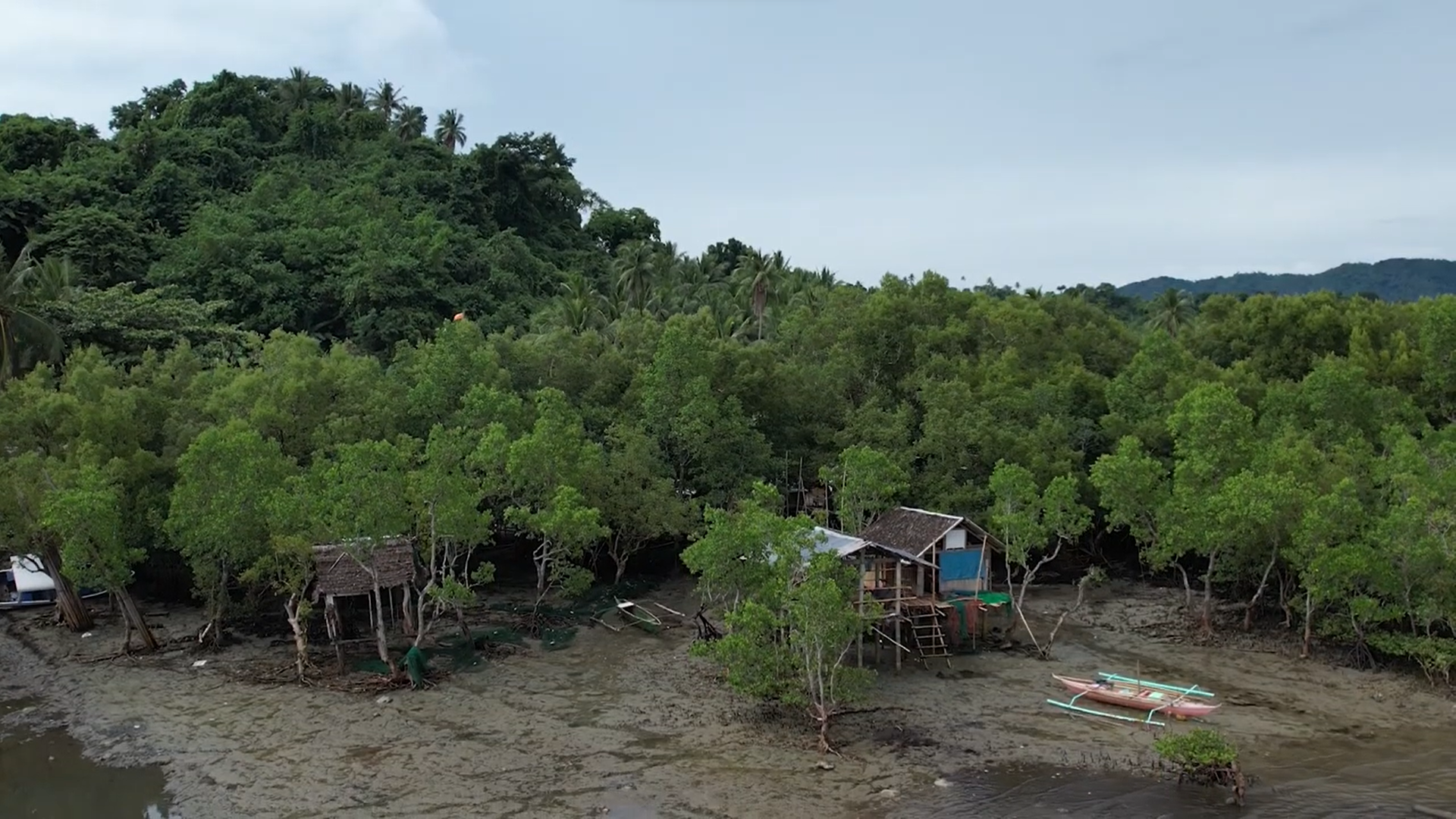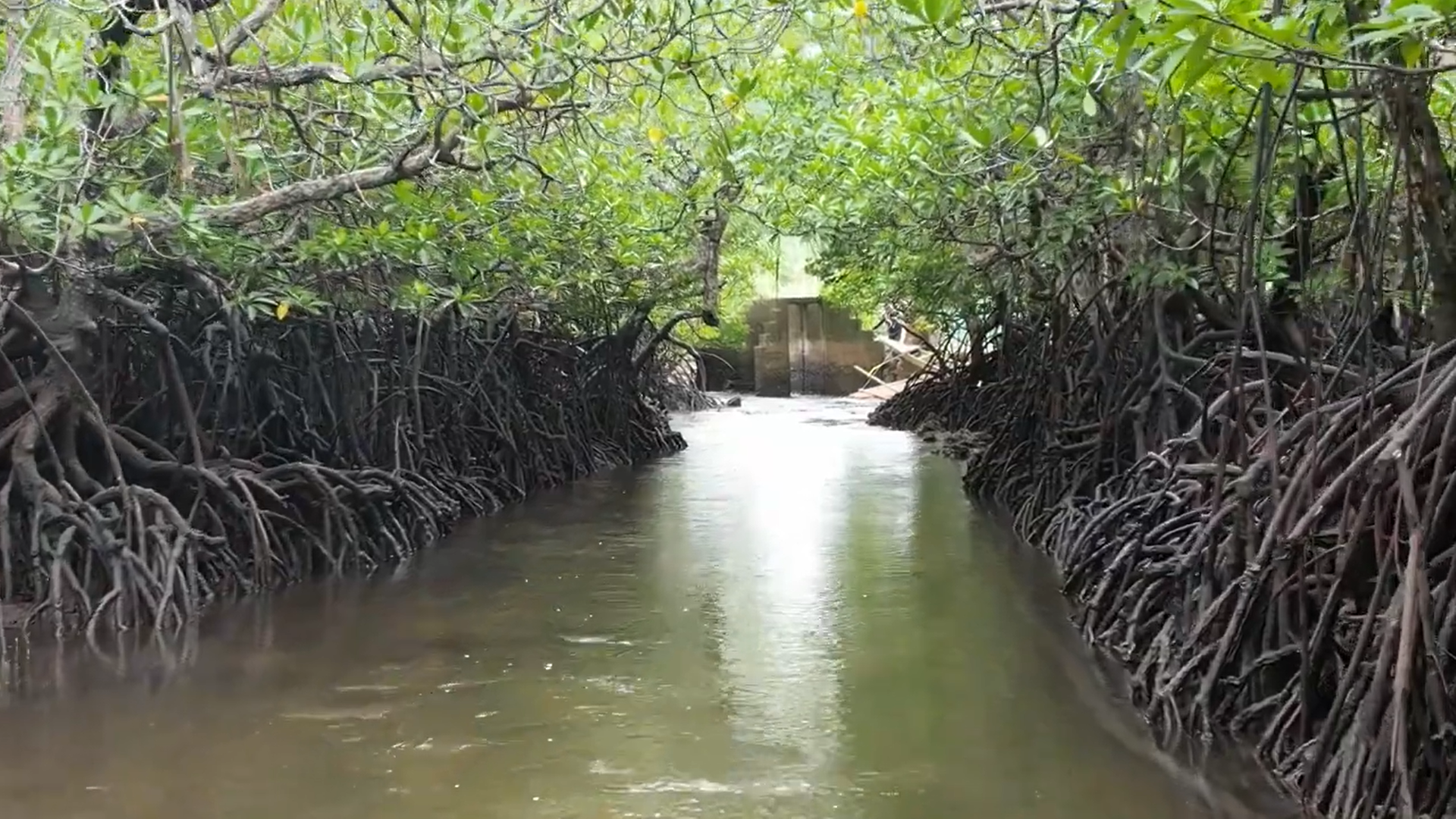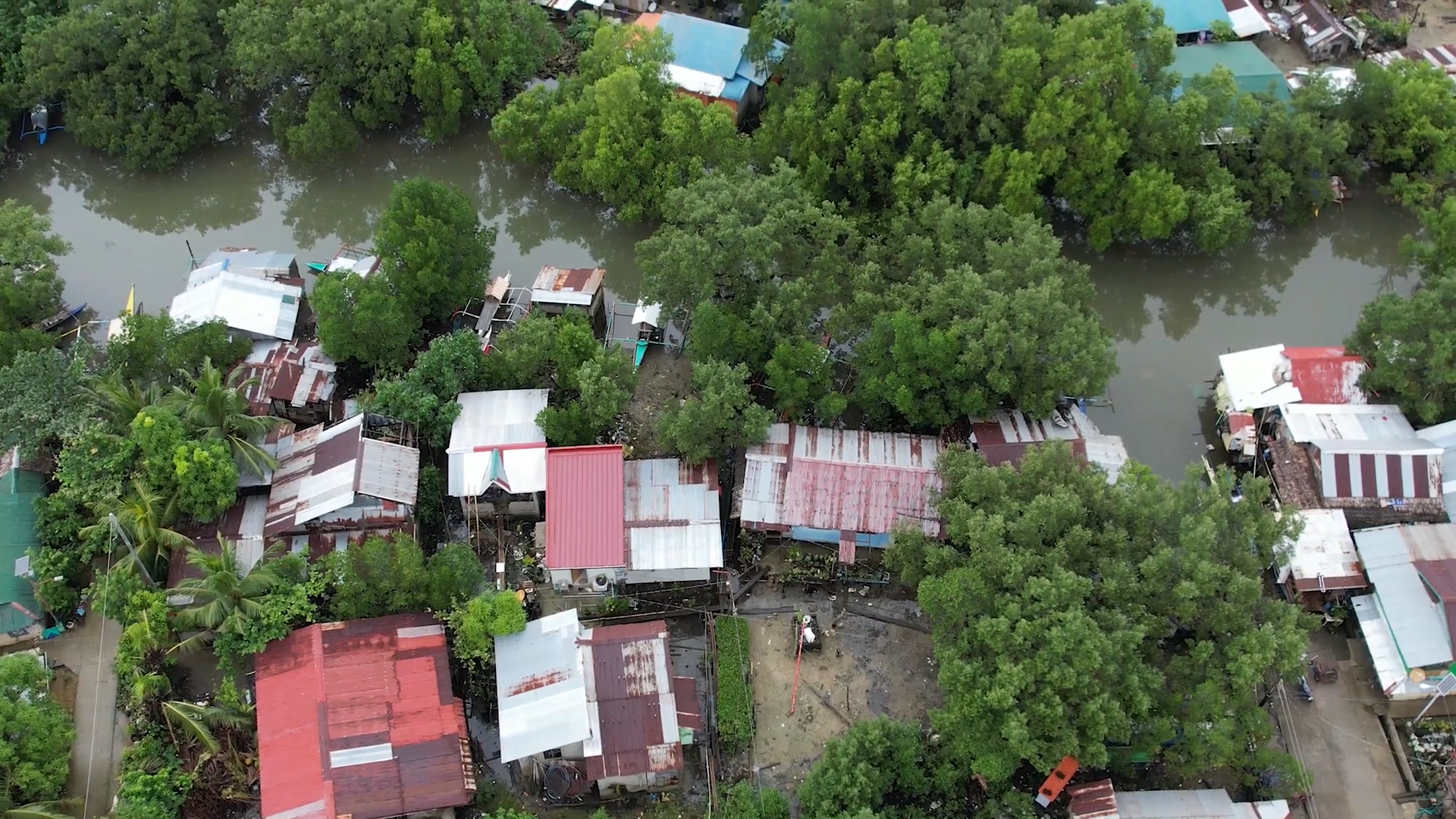With the struggles and changes brought on by the COVID-19 pandemic still fresh in mind, scientists from the University of the Philippines – Diliman College of Science (UPD-CS) came together last February to look back on the things that helped them move above and beyond the bleakness of the times. Not surprisingly, art was a common denominator.
On February 24, UPD-CS’ free public webinar entitled “Intersections: How scientists use art to explore the world” featured speakers who told their personal stories to an audience of hundreds of people, many of whom were still reeling from years of lockdowns.
The panel consisted of the Institute of Biology’s (IB) Dr. Joyce Ibana, who paints flower art and children’s art to advocate for health and Dr. Erika Marie Bascos, who started painting during the pandemic as a form of therapy; Institute of Chemistry’s Dr. Hiyas Junio, who explores natural dyes through chemistry; the Institute of Environmental Science and Meteorology’s Dr. Benjamin Vallejo Jr., who writes prose and poetry on natural history.
Synergism from integrating art, science, and innovation
Dr. Ibana shared her journey in the realms of science, art, and innovation. “My journey in science is relatively straightforward, unlike art which I find more chaotic and uncertain. There are many unknowns and human factors [in art], but this is when I was more in touch with my humanity.” She said innovation is a continuous iteration and prototyping process to improve things.
As a young girl, Dr. Ibana used to tag along with her parents, both educators in Daet, Camarines Norte. Seeing the chemicals and glassware in the school’s chemistry laboratory inspired her to become a chemist, which she proudly announced, to everyone’s surprise, during her graduation from Preparatory school. Even though she continued studying to become a scientist, her love for drawing and art remained in her blood, as she always illustrated models to explain her research.
Dr. Ibana’s study on Chlamydia trachomatis was used as the issue cover of the American journal “Infection and Immunity,” which she considered a significant milestone in her long journey as a scientist.
“What did you get out of this?” her mother asked her one day. “It was the most difficult question I’ve been asked in my whole journey as a scientist,” Dr. Ibana said. “My mother’s question prompted me to accept the invitation from the University of the Philippines to come home in 2013. Here, I found the joy of service in helping other younger generations of scientists realize their dream of becoming a scientist.”
The continuous pursuit of her research on Chlamydia trachomatis in the Philippines led Dr. Ibana to feel a strong desire to communicate the impact of science to humanity better. She painted flowers to express that Chlamydia is not a flower but a disease that can affect women and children. Some of her flower paintings were also included by an entrepreneur in one of their products. Dr. Ibana was fascinated with her ability to have something to give to the local industry.
“In science, our impact is based on citations. One of my most cited papers has 178 citations in about seven years. But when this one [art featured in products] happened, you give joy to many people, to 500 people [buyers of the products] in just three months. It’s very fascinating how art can impact people in a very small way,” Dr. Ibana said.
During the pandemic, Dr. Ibana created flowers and children’s art to highlight the importance of holistic health. She created art featuring COVID-19 and immunology and art that narrates the challenges of being a Filipino scientist.
In her training as a university innovation fellow, Dr. Ibana learned that putting science and innovation together solves real-world problems. Adding art to the mix communicates the science behind the innovation and promotes the innovation to the world. “Putting the realms of art, science, and innovation together in a nurturing and enabling environment, I hypothesize, is what allows us to make a better social impact.”
Chemistry and colors in the context of local textiles
Dr. Junio’s extensive research on chemistry and natural dyes was a timely response to the surge in demand for natural dyes and textiles in the Philippines. In collaboration with the Philippine Textile Research Institute (PTRI), she assesses the quality of the natural indigo dyes produced from the Philippine indigo (Indigofera tinctoria). “Dyes from the Indigofera tinctoria are all considered indigo, but they actually have different colors. Some are pink, purple, or yellow. But it has something to do with the chemistry when they produce the dye.”
According to Dr. Junio, the molecules of the indigo dye undergo different chemical processes that result in various indigo components, such as indigotin (the blue component), indirubin (the red component), and isoindigo (the yellow-orange component). When mixed, these components would form different shades of indigo. “We wanted to ensure that the ones [indigo] produced by the local community have a higher indigotin content than the indirubin and the isoindigo,” she added.
Dr. Junio’s research analyzes small molecules from different sources, such as marine and plant extracts. The extractions they use for natural dyes follow the procedure suggested by PTRI’s handbook. “The molecule is broken down into pieces, and from those pieces, we can identify the particular structure of the molecule by using a reference library,” she explained.
Her research on natural indigo dyes will help standardize the indigo dyes sold in the country. This will give the Philippines a competitive edge and the capability to sell indigo dye powders outside the country for economic gain.
Aside fromnatural indigo dyes, Dr. Junio also researched producing dyes from endemic Philippine plants, such as katmon (Dillenia philipinensis), mabolo (Diospyros discolor), Mindanao gum tree (Eucalyptus deglupta), makopa (Syzygium samarangense), and makopang-kalabaw (Syzygium malaccense).
Dr. Junio and her team plan to give the UP College of Fine Arts natural dyes, which the College can use for its artwork.
Healing using botanical art
Despite being constantly surrounded by botanical drawings through her Rafflesia research and by instructing students to draw plant specimens, Dr. Bascos had no experience with painting and the arts.
It all changed when her daughters asked her to paint with them during the pandemic. Her youngest daughter asked her to paint flowers. Dr. Bascos then posted her paintings on social media. She received a lot of positive feedback, which motivated her to resume painting. Eventually, Dr. Bascos fell in love with painting as it helped her deal with anxiety and depression.
“Painting gave me an hour of peace per day and it’s nice to know that even a chaotic mind is still capable of creating something pretty,” Dr. Bascos said. “I didn’t really care if what I was doing was right or not, the technique or whatsoever, I just painted all my anxieties away.”
At some point, people started asking her if they could buy or commission a particular artwork, but Dr. Bascos was having a lot of self-doubt about her painting skills. Then, she met Bing Famoso, founder of the Philippine Botanical Art Society and the Philippine Fauna Art Society. Famoso, who uses acrylic paint as her medium, asked her to teach her how to paint using watercolor. “Imagine, it’s the founder of all these art societies asking me if I could teach her how to paint using watercolor, and I felt validated. After talking with Ma’am Bing, I was confident to accept commissions or even sell my paintings,” Dr. Bascos narrated.
After a year of painting, Dr. Bascos was able to join an online botanical art exhibition hosted by the Philippine Botanical Art Society with her portrait of the Medinilla magnifica.
Even though Dr. Bascos studies the Raflessia species, it’s a flower she hasn’t tried painting yet. “I’m super intimidated by the Raflessia. I’m so scared that my painting will look like donuts.”
She advises people who want to try painting to just go for it. “Don’t be scared to try something different. I was in my mid-30s when I started painting. You’re never too old to try or learn something new,” Dr. Bascos advised. “If you want to go into botanical art, I suggest you use the actual plant specimen instead of photos because I feel that the colors are better if you see them in person.”
Perceiving creatures through literature
“One way to make [science] come alive is to put them in words,” said Dr. Vallejo as he showed a photo of a Sally Lightfoot crab, one of the species Nobel laureate John Steinbeck Jr. described in his travelogue, The Log from the Sea of Cortez. Dr. Vallejo opined that the environment provides material for writing prose; writers of natural history manuals even try to put their scientific observations into prose.
“This is the point about the arts, the humanities, and the sciences,” he explained. “They are ways of gaining knowledge about the world. Their approaches are rather different, but the impetus to do so is more or less the same.”
Dr. Vallejo also mentioned the works of marine biologist and writer Rachel Carson, whose books, such as Silent Spring influenced the global environmental movement. “We need science to improve, but the impetus to commit to improvement may be found in humanities with sciences in it,” he concluded. ###
The full video recording of “Intersections: How scientists use art to explore the world” can be found here: https://youtu.be/HcfuRM_OyWs
For interview requests and other concerns, please contact media@science.upd.edu.ph
